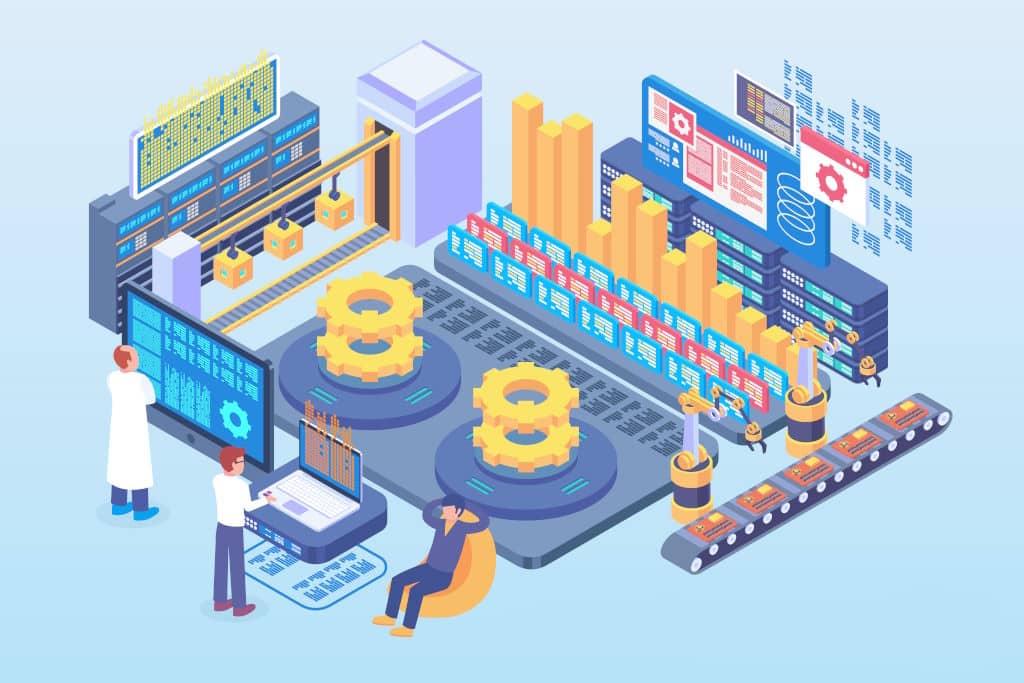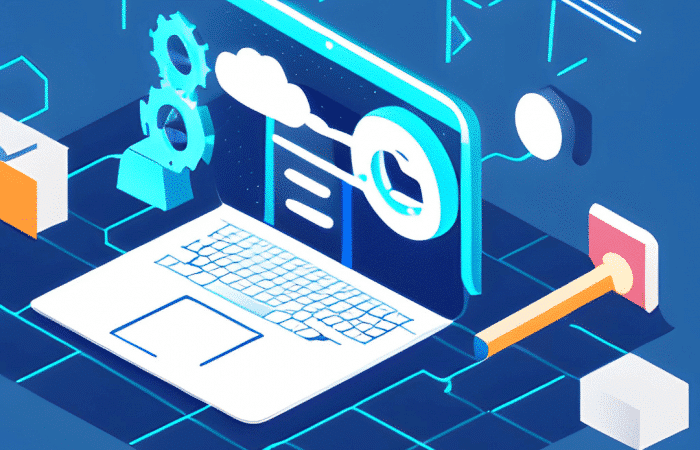Hyperautomation
The next level of automation - a guide for decision makers and practitioners

Hyperautomation: How to take your business processes to the next level
Digitalization requires companies to constantly adapt and optimize. Business processes play a central role here, because they determine efficiency, quality and customer satisfaction.
But how can you design your processes to meet the requirements of the future? The answer is: hyperautomation.
What is hyperautomation?
Hyperautomation is not a single technology, but a strategic approach to automating business and IT processes systematically and over the long term. It combines various technologies to identify, evaluate, implement and monitor automation needs. These technologies include:
- Workflow management, collaboration between people in specialist departments as the basis for digital organization
- Artificial intelligence (AI) that enables data to be analyzed, patterns to be identified and decisions to be made.
- Robotic Process Automation (RPA) and other automation such as Power Automate, which allows software robots to take over manual and rule-based tasks and automate recurring activities.
- Integration Platform as a Service (iPaaS), which makes it possible to connect different systems and applications.
Hyperautomation goes beyond classic process automation by not only automating individual process steps, but by looking at the entire process lifecycle. The goal is to achieve end-to-end automation that adapts to changes in the market and in the organization.

What are the benefits of hyperautomation?
Hyperautomation offers numerous benefits for companies of all sizes and industries. By automating processes, you can:
- Reduce costs by reducing manual labor and eliminating errors.
- Save time by speeding up processes and eliminating waiting times.
- Increase quality by standardizing processes and delivering consistent results.
- Increase transparency by being able to track and measure processes.
- Promote innovation by freeing employees from routine tasks and giving them more room for creative solutions.
Hyperautomation therefore enables you to make your business processes more effective and efficient, giving you a competitive edge.
Why is hyperautomation strategically important?
Hyperautomation is not just a trend, but a necessity for companies in the digital age. This is because the requirements for business processes are becoming increasingly complex and dynamic. Customers expect personalized and fast services. Markets are constantly changing due to new technologies and competitors. Organizations must be able to adapt flexibly.
To meet these challenges, it is not enough to automate individual processes. It takes a holistic view of the process landscape and continuous improvement of automation solutions. Hyperautomation gives you this opportunity by providing a platform to intelligently manage and optimize your processes.

What does the future of hyperautomation look like?
The future of hyperautomation is promising. The technologies behind hyperautomation are becoming more powerful and accessible. Artificial intelligence will become increasingly capable of solving complex problems and complementing human capabilities. Robotic Process Automation will become increasingly capable of automating different types of processes, including those that require unstructured data or human interaction. Business Process Management and Intelligent Workflow Management solutions will increasingly be able to analyze, optimize and adapt processes. Integration Platform as a Service and low-code/no-code tools will increasingly be able to integrate and extend different systems and applications.
All these technologies will work together to enable seamless and intelligent automation of processes. In doing so, they will not only increase efficiency and quality, but also create new opportunities for innovation and value creation.
Hyperautomation will thus become an essential factor for the digital transformation and competitiveness of companies in all industries and regions.
How can you benefit from hyperautomation?
Hyperautomation is not a project that you can implement once and then forget about. It is a continuous process that requires strategic alignment, cultural change and technological transformation. To benefit from hyperautomation, you need to follow these steps:
Define your goals and vision for hyperautomation
What do you want to achieve? Which processes do you want to automate? How do you want to involve your customers, employees and partners?
Analyze your existing processes and identify automation potential
Where are there manual, repetitive or error-prone tasks? Where are there bottlenecks or inefficiencies? Where are there opportunities for improvement or innovation potential?
Select the right technologies for your automation solutions
Which technologies can best support your processes? How can you combine and integrate these technologies? How can you adapt these technologies to your requirements?
Implement your automation solutions step-by-step and iteratively
How can you test and validate your automation solutions? How can you scale and expand your automation solutions? How can you monitor and optimize your automation solutions?
Promote a culture of hyperautomation in your organization
How can you inspire and qualify your employees for hyperautomation? How can you engage your customers and partners in your automation solutions? How can you promote continuous improvement and innovation?
Conclusion: Simplicity is the key to success
Hyperautomation is an exciting way to take your business processes to the next level. By combining different technologies, you can make your processes faster, more accurate, more transparent and more innovative. However, you don’t have to automate everything at once or increase complexity. On the contrary: simplicity is the key to success.
By focusing on the essential goals and processes, systematically identifying and evaluating automation potential, selecting and implementing the appropriate technologies, and fostering a culture of hyperautomation, you can benefit from hyperautomation. Not only will you save costs and gain time, but you can also create new value for your customers, employees, and partners.